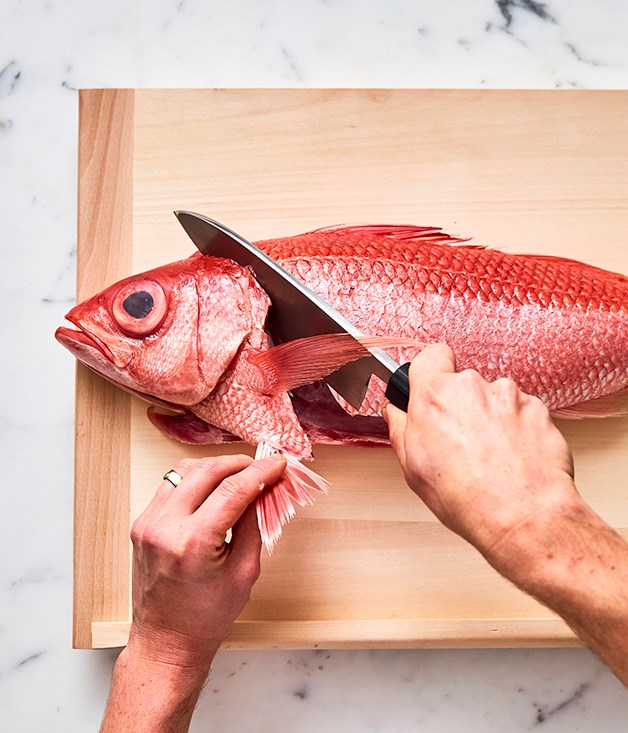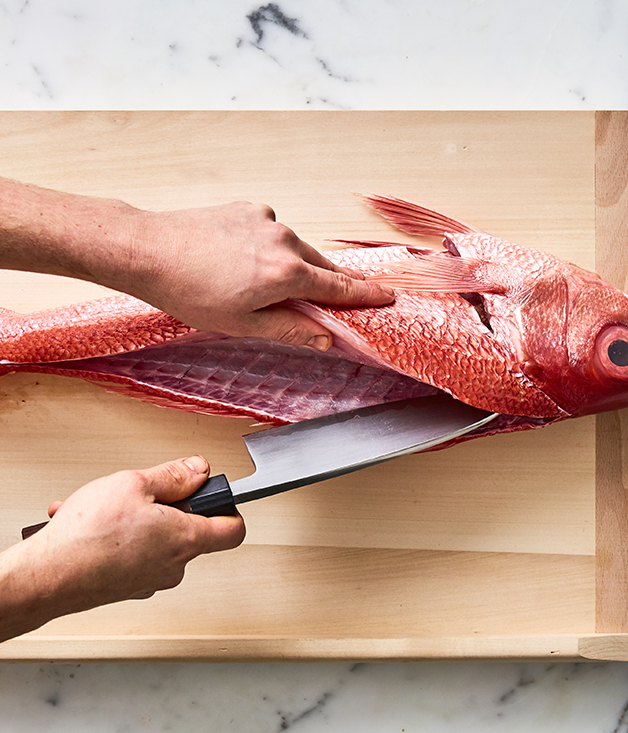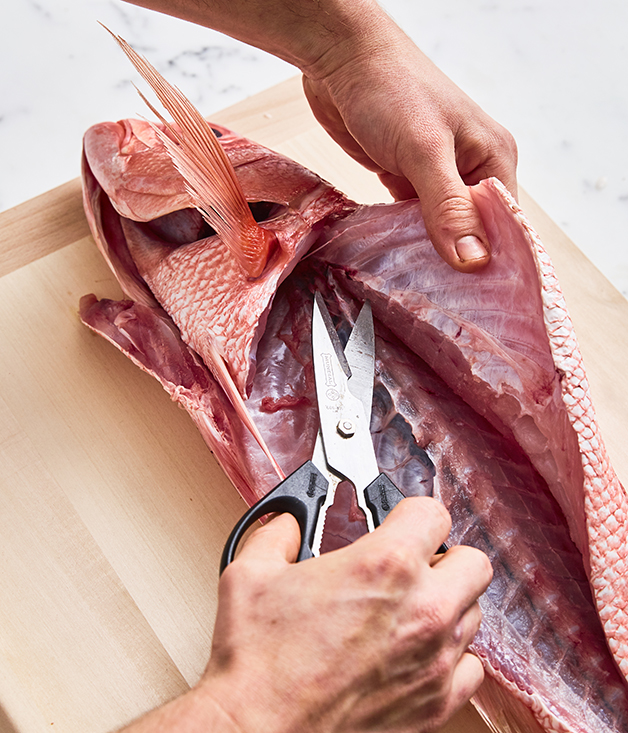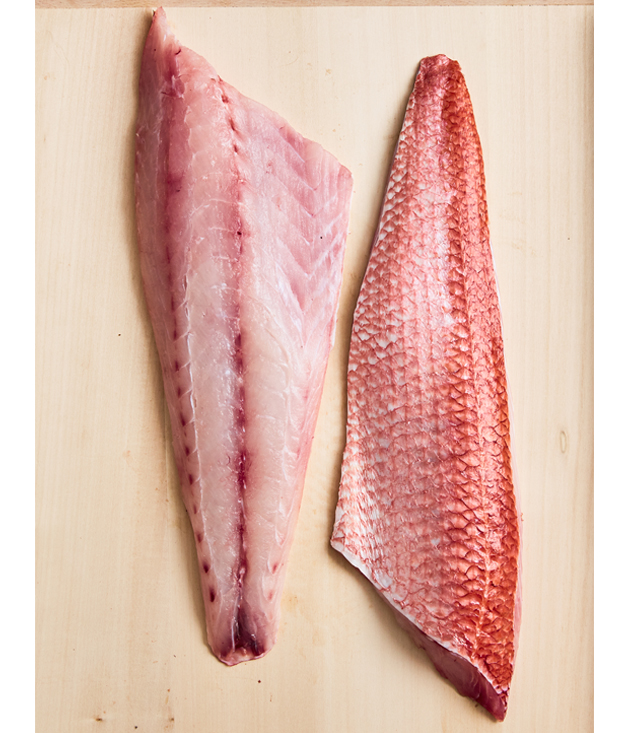
Josh Niland, chef and owner of Sydney seafood restaurant Saint Peter and our freshly minted Best New Talent 2018 awardee, knows his fish, and for serious quality he says there's no substitute for buying fish whole and cleaning them yourself. "If the fish is already cleaned, it's been handled in a lot of water, which affects its quality," he says. Look for firm fish with bright eyes, clear scales and a smell of the ocean, not of fish.
Niland's other advice? "Ask for ikejime-spiked fish," he says. "That means it's been caught and killed quickly."
CLEANING FISH
You can get your fishmonger to scale and gut the fish for you before you do your filleting, but doing it yourself isn't hard. Josh Niland cuts the scales off with a knife, but scraping them off with a spoon also works well; do it in a plastic bag to keep the mess under control, then wipe the fish with paper towel.

To gut the fish, insert a knife 1.5cm into the anal vent and cut along the belly to the mouth. Open the cheeks to expose the gills, then cut the gill joint with scissors and cut the gills free from the head. Using paper towel, hold the gills tight and pull them towards the tail to remove the innards.
HOW TO FILLET A FISH STEP-BY-STEP
1 For the first cuts, place the fish with the belly facing you and the head to the left (or the right if you are left-handed). Pull the pelvic (base) fin outwards and make a cut behind the fins to separate them from the fillet, then cut around behind the head until you hit bone.
.jpg)
2 Rotate the fish so the belly is facing away from you, then, starting from the cut at the top of the head, cut along the backbone from head to tail, cutting smoothly along the length of the fillet. Angling your knife towards the bones, keep running your knife along where the flesh meets the bones to open out the fillet until you feel your knife reach the raised spine in the middle.

3 Halfway along the fish, hold the knife flat against the backbone and push the point through to the other side of the fillet. With the knife protruding out the other side and pressing against the spine, cut all the way to the tail to separate the tail section. Turn the fish so the belly faces you, and lift the tail section to expose the ribs. Snip through the ribs with scissors up to the first cut. You can now remove the first fillet.

4 Flip the fish so the belly faces away from you and the head points left. Hang the head off the edge of the board so the fish lies flat; this way you'll be able to cut evenly and preserve more flesh. Repeat the first cut, then cut along the back to open out the fillet as before (the technique here is similar to the first side, except reversed). Separate the tail end, then use scissors to cut through the ribs and remove the second fillet.

5 To clean the fillets, place the tip of a small knife under the rib bones and, guiding the knife by pressing it against the ribs, cut towards the pin bones, then through them to free the ribs. Turn the knife the other way and, using the bones as a guide, cut up and against the ribs, gently peeling away and slicing.

6 Remove the pin bones, then trim the edges of the fillets. Your fish is ready to rock. Refrigerate skin-side up topped with a piece of Go Between and use it within two days.

TOOLKIT
Niland uses a Sabatier carving knife without flex to fillet larger fish or a 15cm flexible filleting knife for smaller fish ($78 and $65, from Peter's of Kensington). If he wanted to splash out, he says, he'd quite like a Japanese filleting knife (deba) forged from blue steel ($406, from Chef's Armoury) or carbon steel ($736, from Chef's Armoury).
